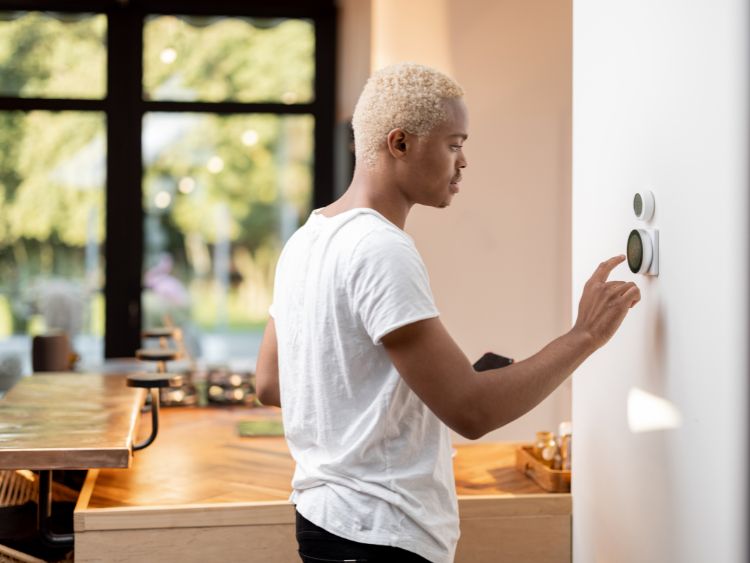Ah, the Blushing Philodendron! Just hearing its name sparks a sense of wonder and curiosity. This plant, a gem in the world of houseplants, isn’t just another green leaf to add to your collection. It’s a statement, a living piece of art that brings more than just aesthetic value to your space. In this comprehensive guide, we’ll dive deep into the world of the pink princess philodendron for sale, exploring its quirks, care tips, and why it’s rapidly becoming a must-have for plant lovers.
What Makes the Blushing Philodendron So Special?
- Aesthetic Appeal: With its unique foliage and blushing hues, this plant is a head-turner.
- Easy Care: Perfect for both seasoned plant parents and beginners.
- Air Purifying Qualities: Beyond beauty, it’s a natural air purifier.
The Origin and Characteristics of the Blushing Philodendron
Originally from the tropical regions, the Blushing Philodendron, scientifically known as Philodendron erubescens, is renowned for its striking appearance. It features heart-shaped leaves that often display a blend of green and reddish-pink hues, thus the name “blushing.” This climber thrives in warm, humid conditions, mimicking its natural rainforest habitat.
Caring for Your Blushing Philodendron
Light Requirements
- Indirect Light: Prefers bright, indirect sunlight.
- Avoid Direct Sun: Direct sunlight can scorch its leaves.
Watering and Humidity
- Consistent Moisture: Keep the soil evenly moist but not soggy.
- Humidity Tips: Loves high humidity. Consider a humidifier or a pebble tray.
Soil and Fertilization
- Well-Draining Soil: Opt for a soil mix that allows good drainage.
- Fertilize Wisely: Use a balanced liquid fertilizer monthly during the growing season.
Pruning and Repotting
- Pruning Needs: Prune to maintain shape and encourage fuller growth.
- Repotting Schedule: Repot every 2-3 years or when roots become crowded.
Potential Challenges and Solutions
Pest Control
- Common Pests: Watch out for aphids and spider mites.
- Natural Remedies: Use neem oil or insecticidal soap for treatment.
Disease Prevention
- Overwatering Risks: Overwatering can lead to root rot.
- Preventative Measures: Ensure proper drainage and avoid letting water sit in the saucer.
Styling with the Blushing Philodendron
The Blushing Philodendron isn’t just a plant; it’s a versatile decor element. Whether you’re going for a minimalistic look or a lush indoor jungle, this plant fits right in. Here’s how:
- Create a Focal Point: Let it climb a moss pole or trellis.
- Group with Other Plants: Complement it with other philodendrons or ferns for a textured look.
- Container Choices: Choose pots that accentuate its hues – think terracotta or vibrant ceramics.
Historical Context of the Blushing Philodendron
The Blushing Philodendron, or Philodendron erubescens, is more than just a houseplant; it’s a story of botanical exploration and cultural significance. Originating in the tropical rainforests of Central and South America, this species was first described in the 19th century, during a period when European explorers and botanists were fervently cataloging exotic plants from the New World.
Real-World Example:
In the 1800s, European botanical gardens showcased tropical plants like the Philodendron as symbols of colonial exploration and scientific advancement. The introduction of such exotic species into Europe and North America sparked a craze among the affluent for collecting and cultivating rare plants, leading to the popularization of indoor gardening.
Step-by-Step Process of Cultivating Blushing Philodendron
Step 1: Selecting the Right Environment
- Location: Choose a spot with bright, indirect sunlight.
- Temperature: Maintain a warm temperature, ideally between 65-80°F (18-27°C).
Step 2: Planting
- Soil: Use well-draining, nutrient-rich potting soil.
- Potting: Ensure the pot has drainage holes to prevent waterlogging.
Step 3: Watering and Humidity
- Watering: Keep the soil evenly moist, watering when the top inch feels dry.
- Humidity: Aim for high humidity, around 60-80%.
Step 4: Maintenance
- Fertilization: Apply a balanced liquid fertilizer monthly during the growing season.
- Pruning: Trim back any leggy or dead stems to encourage bushier growth.
Case Studies
Case Study 1: Residential Indoor Garden
In a New York City apartment, a Blushing Philodendron thrived in a north-facing window, showing resilience in lower light conditions and becoming a lush, focal point in a small living space.
Case Study 2: Office Space Greenery
An office in San Francisco integrated several Blushing Philodendrons as part of their biophilic design. The plants contributed to improved air quality and employee well-being, with reported increases in productivity and reduced stress levels.
Case Study 3: Commercial Plant Nursery
A nursery in Florida specialized in propagating Blushing Philodendrons, leveraging their popularity to drive sales. They implemented advanced hydroponic systems for propagation, showcasing innovation in plant cultivation.
Benefits of Blushing Philodendron
Socio-Economic Benefits
- Economic Growth: In tropical countries, cultivating and exporting Philodendrons can boost local economies.
- Job Creation: Nurseries and botanical gardens offer employment opportunities in both cultivation and educational roles.
Psychological Benefits
- Mental Health: Caring for plants like the Blushing Philodendron can reduce stress and improve mental well-being.
- Aesthetic Value: Its unique appearance enhances living spaces, contributing to a pleasing environment.
Community Benefits
- Educational Opportunities: Botanical gardens and nurseries often serve as educational centers, promoting environmental awareness.
Impact on Host Country’s Socio-Economic Structure
- Tourism: In countries where these plants are native, botanical gardens can attract tourists, boosting local economies.
- Export Revenue: The popularity of exotic plants in global markets can be a significant source of revenue.
Challenges Faced
From the Plant’s Perspective
- Environmental Changes: Climate change poses a threat to its natural habitats.
- Overharvesting: Unsustainable harvesting from the wild can lead to a decrease in natural populations.
From the Host Country’s Perspective
- Regulatory Challenges: Ensuring sustainable trade of exotic plants while preventing illegal trafficking.
- Balancing Ecology and Economy: Finding a balance between commercial cultivation and protecting natural ecosystems.
Future Outlook
Over the next decade, we might witness:
- Increased Regulation: Stricter international laws governing the trade of exotic plants.
- Sustainable Cultivation Practices: More emphasis on sustainable, eco-friendly cultivation methods.
- Technological Advancements: Use of technology in cultivation and monitoring of plant health.
- Growing Popularity: A continued rise in the popularity of houseplants, with the Blushing Philodendron remaining a favorite.
FAQs
Can the Blushing Philodendron thrive in low light?
While it prefers bright, indirect light, it can tolerate lower light conditions. However, growth may be slower, and the vibrant colors might fade.
Is the Blushing Philodendron toxic to pets?
Yes, it’s toxic if ingested. Keep it out of reach of curious pets.
How often should I fertilize my Blushing Philodendron?
Fertilize monthly during the growing season (spring and summer) and reduce in the cooler months.
Conclusion
The Blushing Philodendron, with its captivating beauty and forgiving nature, is truly a treasure in the world of houseplants. Whether you’re a seasoned green thumb or just starting, it’s a plant that brings joy and vibrancy to any space. Care for it well, and it’ll reward you with its stunning display of color and life. So, why not add a Blushing Philodendron to your collection and watch as it transforms your space into a lush, green haven? The Blushing Philodendron’s journey from the lush rainforests to our homes and offices is a testament to its adaptability and enduring appeal. Its history, cultivation, and impact reflect a broader narrative about our relationship with plants – a relationship that’s as beneficial as it is beautiful. As we move forward, this plant not only brightens our spaces but also reminds us of the intricate connection between nature, culture, and our own well-being.


